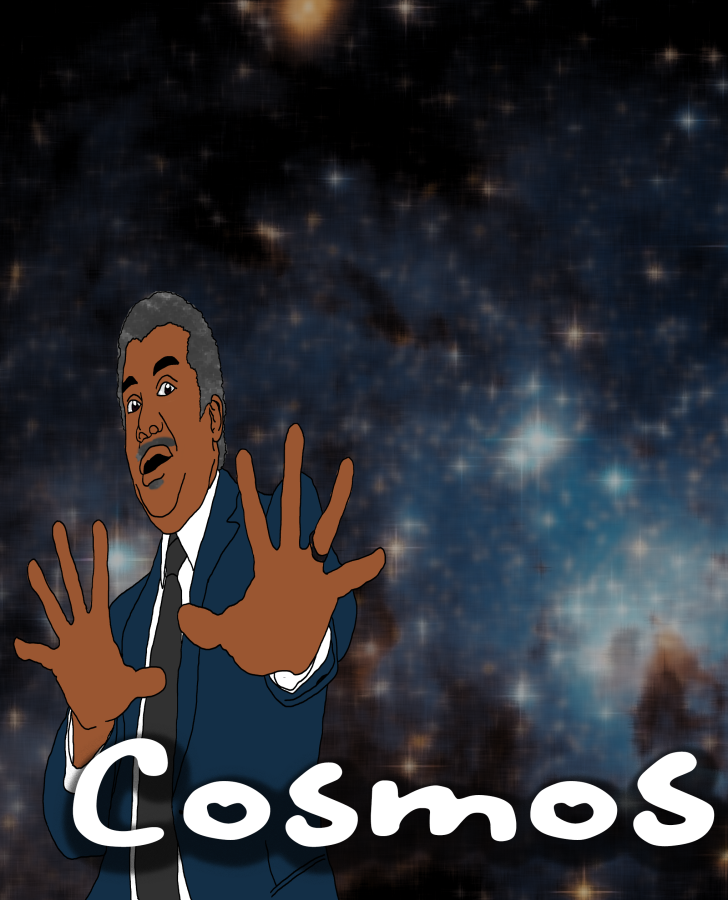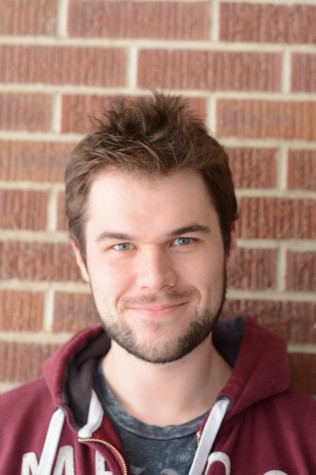Cosmos, the Universe in Forty-Five Minutes
April 12, 2014
Deep in the methane oceans of Titan, one of the moons of Saturn, a ship descends and scans for life in a black, alien sea.
Perhaps that seems far-fetched today, but within the world of “Cosmos: A Spacetime Odyssey,” such journeys are common-place. The newly rebooted television series from 1980 welcomes a new age of young and old dreamers alike to the world of science, traveling from the farthest reaches of the known universe to within the smallest proteins of DNA to answer some of life’s greatest quandaries. Where did we come from? Are we alone in the universe? Neil deGrasse Tyson uses his eloquent language and understanding of science to make the seemingly limitless possibilities of the universe fit in the mind of any viewer.
The original “Cosmos” was released in 1980, hosted by one of the planets most well known scientists of the modern age, Carl Sagan.
Sagan was a famous astronomer, astrophysicist, cosmologist and author. Through his work he helped a generation answer the call of the universe, who then themselves would take an interest in scientific fields. He lived through the space age, when man first made the journey to the stars, and pioneered many scientific endeavors himself, such as being one of the first to theorize that one of Saturn’s moons, Titan, had a liquid ocean on its surface.
“Watching the original ‘Cosmos’ was really what inspired me to go into teaching,” senior Dylan Olson said. “The way Sagan presented complicated ideas in an eloquent, easy to digest fashion made me want to teach others to further spread knowledge and understanding to others.”
Sagan’s influence also made an impact on another young star-gazer: Neil deGrasse Tyson, the host of “Cosmos: A Spacetime Odyssey.” When Tyson applied for colleges, one of which Sagan taught at and reached out to Tyson.”He actually took the initiative and care to contact me. He was very inspirational and a most powerful influence. Dr. Sagan was as great as the universe, an effective mentor.”
After spending the day with Sagan, Tyson said, “I already knew I wanted to become a scientist. But that afternoon, I learned from Carl the kind of person I wanted to become.”
The supposed bridge that keeps entertainment and education is obliterated by the show. From complex topics like the power and influence of gravity, to the big bang theory and speed of light, everything is covered with the same simplicity and excitement that even the most scientifically illiterate person can follow along. And those are the very people whom the show is perhaps perfect for. It is an introductory course in the beauty of science, and indeed the universe.
“How many science shows can be described as poetic?” student Nick Poling asked. “There is nothing else like ‘Cosmos’ on television right now, though there should be.”
Though only a few episodes have been released thus far, each one refuses to shy away from hot discussion points such as the big bang and evolution. It is a science show to the core, and does not sugar-coat the facts.
“The goal of ‘Cosmos’ was not ever to present the viewers with cold scientific facts, but rather inspire people by sharing a grander vision of the universe that many had yet to contemplate,” Poling said.
Sagan may have died years ago and never got to see the Curiosity rover land safely on Mars, or the discovery of the Higgs Boson particle, but through ‘Cosmos’ his voice echoes through time and space. In a sense, Sagan has become the voice of the universe.
The universe has never been more inviting.









